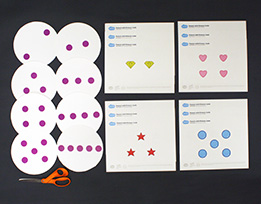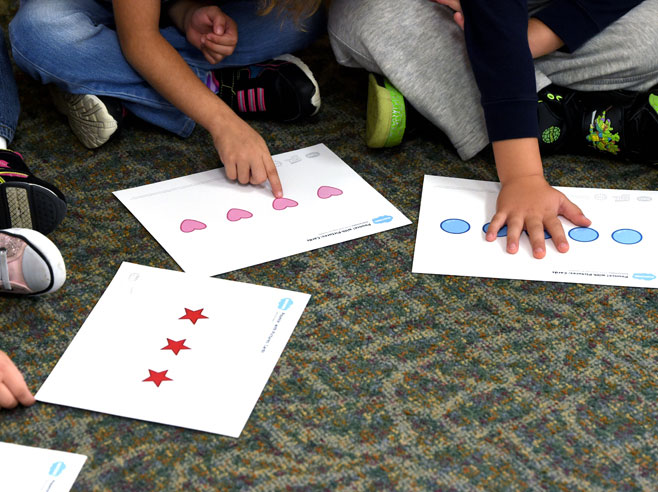Children play a game where they QUICKLY touch the pounce cards with same number of pictures as dots on the plate shown.
Materials

- Pounce! with Pictures: Cards (PDF)
- Dot Plates (PDF)
- Cardstock or plain paper
- Scissors
Preparation
- Print and copy enough pounce cards for each child to have one.
- Print the dot plates or use those made for Lesson 1.
Directions
- Have the children sit in a big circle. Lay out pounce cards inside the circle of children, with the numbers spread evenly (2-3-4-5, 2-3-4-5, etc.) so every child has a set of 2, 3, 4, and 5 in fairly easy reach.
- Flash a dot plate for only 2 seconds and ask the children to touch the card showing the same number of pictures as are on the plate. Note: Several children can touch the same card, even if they have to reach across each other.
- After playing several rounds, have the children stand up, join hands, and take a small step back. Then the whole class can circle around the circle of cards singing, One, two, three, four. Round the circle we go. / One, two, three, four. Round the circle we go. / One, two, three, four. Round the circle we go. / Let’s sit down.
- Now play a new round of the game.

